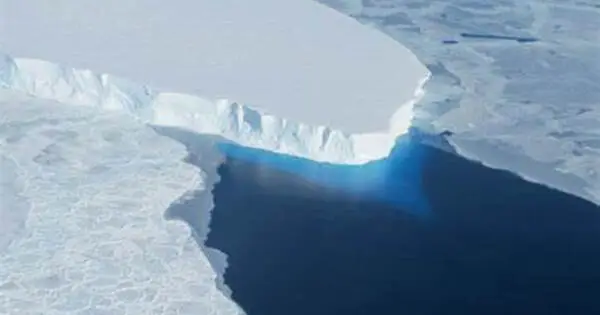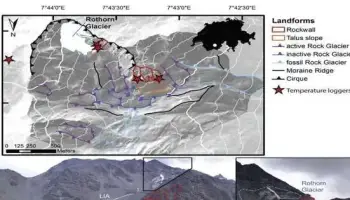Climate engineering, also known as geoengineering, is the deliberate manipulation of the Earth’s climate system in order to mitigate the effects of climate change. Solar radiation management (SRM) and carbon dioxide removal (CDR) are two proposed techniques.
According to one study, scattering sunlight-reflecting particles in the atmosphere – a theoretical form of climate engineering known as stratospheric aerosol injection’ – has the potential to slow the rapid melting of ice in Western Antarctica. According to a study led by Indiana University researchers, scattering sunlight-reflecting particles in the atmosphere could slow rapid melting in West Antarctica and reduce the risk of catastrophic sea-level rise.
The study, one of the first to look at how climate engineering might affect Antarctica, comes as scientists warn of the increasing likelihood of accelerated ice loss in West Antarctica this century. The study was published in the Journal of Geophysical Research: Atmospheres.
“Even if the world meets the ambitious target of limiting global warming to 1.5 degrees Celsius above pre-industrial levels – which we are not on track to do – we will see significant sea-level rise,” said Paul Goddard, an assistant research scientist at the IU College of Arts and Sciences’ Department of Earth and Atmospheric Sciences and the study’s lead author.
“Exploring ways to reflect sunlight into space before it is absorbed into Earth’s climate system could help buy us more time to address climate change and avoid or delay climate tipping points, such as collapse of the West Antarctic Ice Sheet.”
Exploring ways to reflect sunlight into space before it is absorbed into Earth’s climate system could help buy us more time to address climate change and avoid or delay climate tipping points, such as the collapse of the West Antarctic Ice Sheet.
Paul Goddard
In addition to Goddard, co-authors on the paper include IU earth and atmospheric sciences assistant professor Ben Kravitz; Douglas MacMartin and Daniele Visioni of Cornell University; Ewa Bednarz with the National Oceanic and Atmospheric Administration; and Walker Lee of the National Center for Atmospheric Research.
The study looked into stratospheric aerosol injection, a type of climate engineering in which a fleet of airplanes releases large amounts of tiny sulfur droplets into the stratosphere as a proposed method for keeping global temperatures in check.
The method is similar to what happens when a large volcano spews massive amounts of particles into the upper atmosphere, causing a cooling effect that can last months or years. Another proposed strategy for cooling the planet, stratospheric aerosol injection and marine cloud brightening, was recently discussed in a White House report outlining a potential research program.

Ten of the hottest years on record have occurred in the last 14 years. That’s including 2023, which is on track to supplant 2016 as the hottest year ever recorded. The spike in global temperatures has coincided with unprecedented heat waves, wildfires, flash flooding, and other climate-related impacts around the world.
In their study, IU researchers and collaborators used high-performance computers and global climate models to simulate different stratospheric aerosol injection scenarios, identifying the cooling strategy with the most potential to slow Antarctic ice loss. A portion of the data analysis conducted for the study took place on IU University Information Technology Services’ large-memory computer cluster, Carbonate.
“Where you release the aerosols matters a lot and can affect the climate differently,” Goddard said. “In this case, we found that releasing stratospheric aerosols at multiple latitudes within the tropics and sub-tropics, with a greater proportion in the Southern Hemisphere, is the best strategy for preserving land ice in Antarctica because it helps keep warm ocean waters away from the ice shelves.”
The researchers ran 11 different stratospheric aerosol injection scenarios through a computer simulation. Three cases spanned multiple latitudes and were thought to be the most likely approach for how stratospheric aerosols injection could be implemented, with temperature targets of 1.5, 1 and 0.5 degrees Celsius above pre-industrial levels. The simulations, which began in 2035 and continued until 2070, included a low-emissions scenario with no stratospheric aerosol injection as a key point of comparison.
Though simulated scenarios with stratospheric aerosol injection at various latitudes showed benefits in terms of Antarctic ice loss, Goddard said that more research is needed to quantify the change in melt rates. Notably, several single-latitude injection scenarios accelerated Antarctic ice loss due to prevailing winds shifting southward, drawing warm ocean waters toward the ice shelves.
“If we’re ever going to engineer the climate, how we do it really matters,” he said. Changes in regional precipitation patterns, for example, are among the risks associated with stratospheric aerosol injection, as is the possibility of “termination shock,” or a rapid rebound of global temperatures to pre-stratospheric aerosol injection levels if the decades-long treatment is interrupted.
The study adds to the growing body of knowledge about the benefits and drawbacks of deliberately cooling the planet, a concept that is becoming more widely discussed as the effects of climate change become more visible, according to Kravitz.
“If society decides it wants to do geoengineering someday, we need to better understand what we know and what we don’t know,” he told the audience. “We’re beginning to fill some of these knowledge gaps on the risks and regional effects of managing solar radiation, but much more research is needed before anyone can say whether it’s a good idea to actually move forward with it. That is true for Antarctica as well as the rest of the world.”





